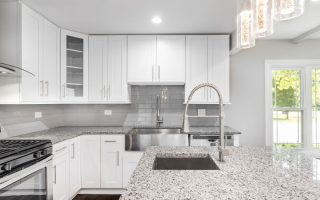Ever wondered why you feel so at ease in your living room or so energized in your kitchen? Did you ever consider that the colors around you could be playing a role? The psychology of color suggests that the colors we surround ourselves with can indeed affect our emotions, behavior, and overall well-being. Our homes, where we spend a significant amount of time, are particularly influenced by these colorful companions.
A Personal Anecdote: From Drab to Fab
I used to live in a small apartment with beige walls and plain white furniture. It was practical, but I couldn’t shake the feeling that something was missing. One day, I decided to paint one of the walls a vibrant turquoise. Instantly, the entire room felt brighter and more alive, and I found myself feeling happier and more creative. This experience made me realize the power that color holds in shaping our environments and, in turn, our emotions.
The Warmth of Red, Yellow, and Orange
Red, the color of fire and passion, can evoke strong emotions like excitement and energy. It can even increase our heart rate and blood pressure. However, too much red can be overwhelming, so it’s best used in moderation. Think of a cozy red armchair in a living room or a fiery red accent wall in a dining room.
Yellow, the color of sunshine, is often associated with happiness, optimism, and creativity. It can brighten a space and make it feel more inviting. Imagine a sunny yellow kitchen or a cheerful yellow nursery.
Orange, a blend of red and yellow, combines the energy of red with the joy of yellow. It’s a vibrant, playful color that can stimulate conversation and appetite. Consider a warm orange accent wall in a living room or a bright orange backsplash in a kitchen.
In the words of neuropsychologist Sanam Hafeez, “Warm colors (red, yellow, and orange) tend to provide the room with an energetic and welcoming atmosphere.”
The Coolness of Blue, Green, and Purple
Blue, the color of the sky and sea, is often associated with calmness, tranquility, and serenity. It can lower blood pressure and heart rate, making it a great choice for bedrooms and bathrooms. Imagine a serene blue bedroom or a relaxing blue spa bathroom.
Green, the color of nature, is known for its soothing and refreshing qualities. It can create a sense of harmony and balance. Think of a lush green living room or a calming green study.
Purple, a mix of blue and red, is often associated with luxury, creativity, and spirituality. It can add a touch of elegance and mystery to a space. Consider a rich purple accent wall in a bedroom or a deep purple dining room.
“Cool colors (blue, green, and purple), on the other hand, tend to give the room a calm and easygoing mood,” says Hafeez.
Beyond the Rainbow: The Neutrals
Neutral colors like white, gray, and beige can serve as a backdrop for other colors. They can create a sense of spaciousness and airiness. White, in particular, can make a room feel clean and bright. However, too much white can feel sterile, so it’s important to balance it with other colors.
Color Meanings and Moods: A Summary
| Color | Meanings | Moods |
|---|---|---|
| Red | Passion, energy, excitement | Stimulating, energizing, attention-grabbing |
| Yellow | Happiness, optimism, creativity | Cheerful, uplifting, inviting |
| Orange | Warmth, energy, enthusiasm | Vibrant, playful, stimulating |
| Blue | Calmness, tranquility, serenity | Relaxing, soothing, peaceful |
| Green | Nature, growth, harmony | Refreshing, calming, balancing |
| Purple | Luxury, creativity, spirituality | Elegant, mysterious, sophisticated |
Understanding the Nuances: Cultural and Personal Differences
It’s important to note that color meanings and associations can vary across cultures and individuals. For example, in some cultures, white is associated with mourning, while in others, it’s associated with purity and new beginnings. Personal experiences and preferences can also influence how we perceive and react to colors.
As psychologist Rachel Goldman, PhD, points out, “It’s amazing how colors can truly impact our mood and influence our behavior. Take a moment to think about a familiar space to you, is there a color that stands out about that space? Think about your clothes and how different colored clothing makes you feel when you wear them.”
Applying Color Psychology to Your Home
Understanding the psychology of color can help you create a home that supports your emotional well-being. For example, if you want to create a relaxing bedroom, you might choose calming blues and greens. If you want to create an energizing home office, you might choose stimulating reds and yellows.
Remember, there are no hard and fast rules when it comes to color. The best way to choose colors for your home is to experiment and see what works for you.
The Colors of Your Life
Whether you’re painting your walls, choosing furniture, or selecting decor, the colors you choose can have a profound impact on how you feel in your home. By understanding the psychology of color, you can create a home that truly reflects your personality and supports your emotional well-being. So go ahead and experiment with different colors, and discover the hues of happiness that await you in your own home.





